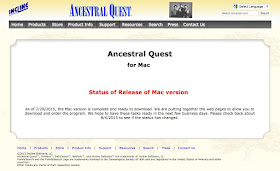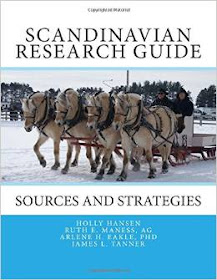Unfortunately, the changes we faced were not only technological in nature, but we also faced fundamental market changes. Beginning in about 1992 or so, all of the computer manufacturers were facing market demand that far outstripped their ability to manufacture their products. Companies like Apple nearly went out of business, not because of technology but because they could not produce their products fast enough. At the store, we had back-orders on computers that were replaced by new models before our back-orders could be fulfilled. Part of this change was caused by the appearance of "big box" stores such as what ultimately became BestBuy and Costco. Now those same "big box" stores are threatened by online distributors such as Amazon.com.
Shortly after 1993, Mesa Computer Mart had to close down. Within a very short time, nearly every dedicated computer store and nearly all of the chain stores went out of business. The last one to go in Mesa was CompUSA.
What has this got to do with genealogy? Plenty. I have been seeing a background of heated genealogical community discussion about moving the Arizona State Library's Genealogy Collection from the State Capital to the State Archives. There have been a very few mentions of the issue in the local Arizona newspapers. Here is a quote from the a news article dated 30 July 2015 and entitled, "Our View: Close Arizona's genealogy library? Good Idea."
The genealogy collection averages three visitors a day. The only person in Arizona Republic photographs taken at the library Tuesday was a librarian. The room was otherwise empty. Many of the holdings have not been touched in years.
It’s hard to justify keeping the place open. Yet genealogists, like anyone else enjoying a service at taxpayer expense, passionately complained. But in doing so, they only supported Reagan’s move. The governor’s office reporting getting 93 emails; Reagan received 50. That’s little more than a whisper.What are they all talking about? Quoting from the same article:
What’s in Arizona's genealogy collection?There are some serious questions that need to be answered, but none of them have anything to do with the closure of the genealogy library. The most serious question is how many of these items are unique to this particular library? If they are unique, why haven't they been made more available to the general public by digitizing the items and putting them online? I would also point out that some of these categories of reference materials, such as books that point researchers to U.S. Census data, are not only online but outmoded.
- 20,000 items, including books, manuscripts and newsletters.
- Reference books that point researchers to U.S. Census data.
- A popular collection of books on Mayflower families.
- Free access to online genealogy sites HeritageQuest Online and Ancestry.com
- Books on histories of Arizona families.
- Individual family histories donated to the state.
Nowhere in the huge stream of genealogy comments online do I find a reference to the fact that the Arizona State Library, Archives and Public Records maintains an active, Digital Arizona Library. This online library contains many valuable genealogical resources such as:
- Online Reference Resources
- The Arizona Memory Project
- The Arizona Digital Newspaper Program
- Reading Arizona
If the physical space is needed so much that it is forcing the closure of a library, then why hasn't the "genealogical community" been legislating to expand the online offerings, which obviously take up much less physical space?
While I am at it, Arizona is one of the very few, perhaps the only, state that has many of its birth and death records online. See Genealogy.az.gov. Although Arizona is certainly not at all in the same league as Washington State with their online collections, we do have more records than most of the U.S. states.
The reasons here are why I talked about the closing of Mesa Computer Mart. Here is one example. I lived in Mesa, Arizona. The State Library is located in Phoenix, Arizona. On a good day, it would take me anywhere from 45 minutes to more than an hour to drive from Mesa to downtown Phoenix on a freeway going the speed limit (I have a lot to say about that, but that really is not relevant to anything genealogical). Then I have to park. Then I have to walk (in the heat) to the Capital building. I am very familiar with the drive since I spent the better part of a year working on a case that involved lobbying at the State Capital.
Did I ever use the genealogical collection in the State Library? Yes, very infrequently and less when I found that most of what I was looking for WAS ALREADY ONLINE!
Now what about reality. Reality is that the largest and most complete genealogical collection of books, microfilm, records and other resources in the State of Arizona has been closed for over 8 months with barely a notice by the same genealogical community that is now up in arms over the State Library. The Mesa FamilySearch Library in Mesa closed at the end of November, 2014 and remains closed to this day with no information on when it will open. Any mention of this by the present genealogical community uprising?
Here's an interesting fact about the collection of books in the Mesa FamilySearch Library. All of the books that are out of copyright or where the copyright holder gave permission, have been digitized and are now online on FamilySearch.org's Books collection.
I have written a number of posts recently about the challenges faced by libraries. It looks to me like some in the genealogical community are in the position of shutting the barn doors after the horses have all escaped. Book technology is changing rapidly. State governments are not immune to the changes. The issue here is not where the collection is housed, but whether or not the State will make the information contained in those books and documents available to the entire state and not just to those who are interested enough to drive and park in downtown Phoenix.
The movement to digitize the materials in the State Genealogical Library should have started years ago. Those genealogists around the world who are concerned about the closure of libraries, need to wake up and see that technology has passed them by. My last question is how many of books and other records in the Arizona State Genealogical Library are already online? Anybody know the answer to that question?
If you are a genealogist in the United States, do you know the ratio of what your state has in genealogically important documents to the number online? By the way, when did I ever avoid a controversial topic?






















